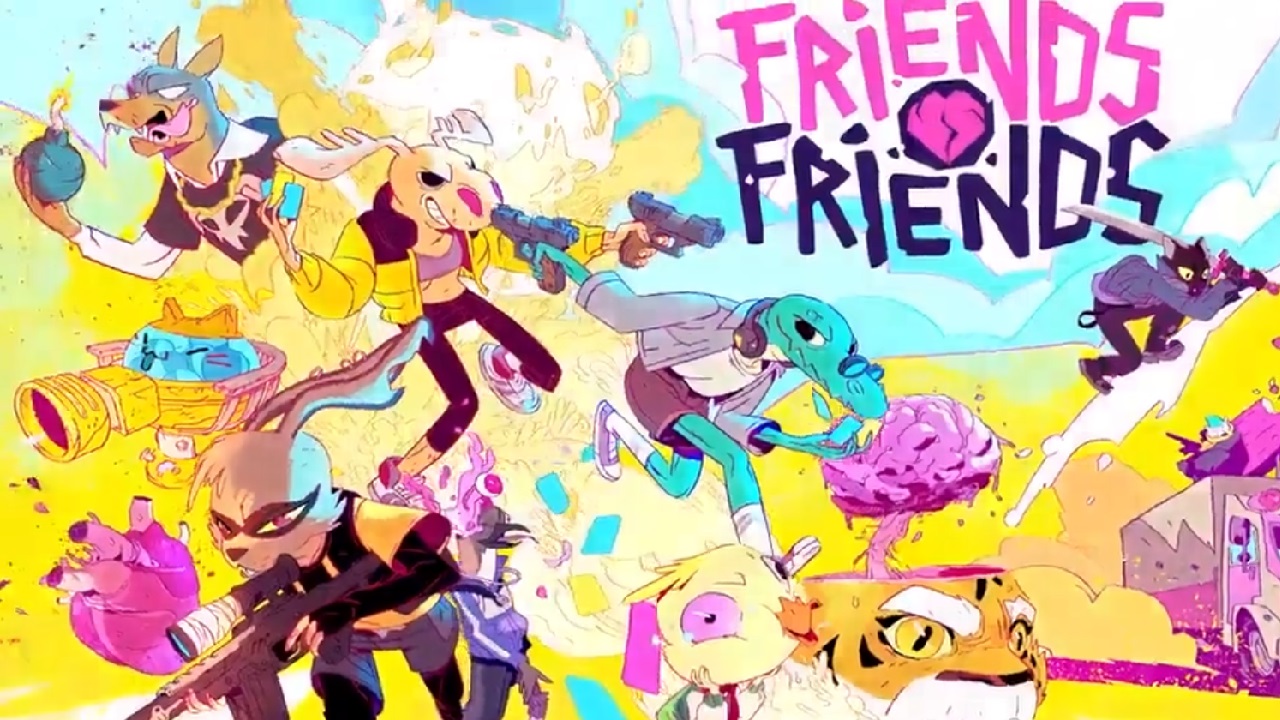Friends vs Friends
Friends, how many of us have them? Hopefully, a vast majority of my readers have multiple people they can call friends and as those with friends know, sometimes we may end up disagreeing on something we feel passionate about. Maybe someone ate that last slice of pizza you were eyeing while they weren't looking. Maybe they said something that offended you, like, "pineapples go on pizza." That sounds like more than enough of a reason to throw a pineapple grenade at their face! Thus, Friends vs Friends is a deck-building multiplayer FPS where disputes are settled via the best three-out-of-five rounds per gunfight.
Before we begin I'd like to give a huge special thanks to Raw Fury for providing us with codes to try out the robust multiplayer gameplay featured in Friends vs Friends. There are multiple ways to play, including 1v1 and 2v2 modes. Players can enjoy up to four buddies in a single session or a combination of human friends and AI bot friends as well. Bots are friends too, we can co-exist together! There is no major plot point or premise as a colorful animated intro tells the player all they need to know about Friends vs Friends. The first paragraph basically summarizes the plot of the letter. You and your friends play as one of several friends who settle differences by playing sentient cards and shooting each other.

What makes Friends vs Friends different from other deck-builders with multiplayer, like One Step From Eden is how basic each card in a deck is. Every card is separated into two categories, cards that benefit the player and cards that harm the opponent. Both players begin each round with a basic pistol but each character also has a unique trait that gives them an edge over others. The duck begins each round with a "green herb" that act as a free medkit while the wolf's bullets deal more damage than other characters. As the player levels up over time, more characters are unlocked with even more ways to play Friends vs Friends.
The maps that are available from the beginning consist of a rooftop, subway station, theater, and highway that feels like something out of a Call of Duty level. This was our favorite level along with the subway station as the former is something players never see in a multiplayer level. There are layers of cars with different indoor elements between some. Of course, falling on the highway leads to death, as well as falling on the train tracks and getting run down by a train in the subway station.

While the level list is limited, they are just the right size for both 1 v 1 and 2 v 2 matches. Some of the smaller maps, like the rooftops, were intense battle royales with four players while many sought to claim choke points in the theater. Each map has a strategy involved that goes well with Friends vs Friends' core mechanic, the cards. As the player completes matches and levels up, they may earn random card drops as well as credits to earn booster packs. There aren't many rules to consider when building a deck so long as it stays under your total deck cost. Each card has a cost that adds on to the total count, so having a few powerful cards means having less variety and vice versa.
Cards are the only way to obtain different weapons, like shotguns, sniper rifles, and magnum revolvers. These deal a lot more damage than the default pistol, especially with the wolf's trait. Fortunately, there are cards that shrink the player's head, making it difficult to land a headshot, increase one's max health, decrease the amount of damage they take from attacks, and turn themselves into ice similar to Mei from Overwatch. Likewise, some of the debuffs players have access to are items that drain an opponent's health should they ever use a card. You could kill an opponent theoretically by just using cards that deal indirect damage and never lay a finger on an opponent with their pistol.

This is where the "friendship-ruining aspect" of Friends vs Friends comes into play. Cheap play is encouraged, much like another fan-favorite game where friendships are constantly tested (hi Windjammers 2). The more cards players have access to, the more creative players can get with their own decks. However, overly relying on cards can leave players at a disadvantage as each round a player's hand resets to a maximum of three. While indirect damage and trickery will win the player's rounds, it's a combination of cards and FPS skills that will win consistent matches.
However, this is what I would consider a fun competitive title. Games are quick, usually lasting five minutes on average, reminding me of round-based games like Valorant and Counter-Strike. Playing with other friends is the best way to play Friends vs Friends but making new friends online is also a valid option. My online experience was a mixed bag, with an assortment of great players, laggers with questionable connections, and other online expected shenanigans.

Players who wish to enjoy a night of Discord with a few buds and try out new deck combinations in quick matches can enjoy the simplicity and surprising in-depth potential of Friends vs Friends. Its asking price is marginally tame as it is $5.99 at the time of this review, but even $9.99 is a very generous price for a game with content on the way.
Friends vs Friends is now available on Steam.

